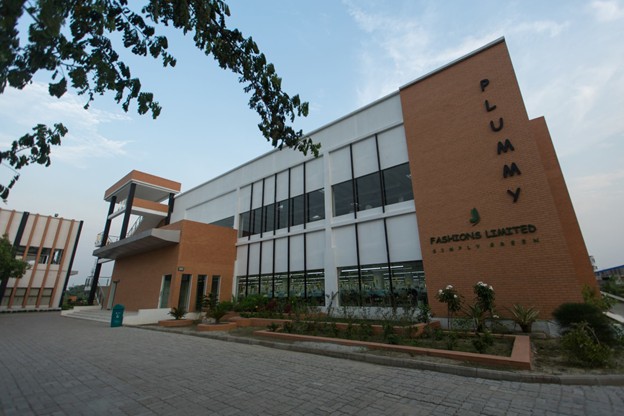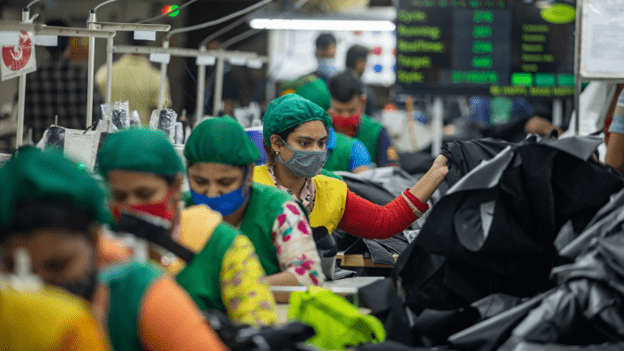Stories Behind the Data Scenes: Navigating the Complex Realities of Research in Bangladesh’s RMG Industry

Conducting fieldwork in the Ready-Made Garment (RMG) sector is challenging anywhere, but doing so in Bangladesh adds several extra layers of complexity, as we discovered during six months of our data collection. Our UKRI–ESRC-funded project required the research team to collect mixed-methods data from workers and managers in factories across the Dhaka Division—particularly Narayanganj, Savar, Ashulia and Gazipur. The goal was simple yet ambitious: to understand working conditions and labour practices on the ground. The journey, however, was anything but straightforward.

Designing the research tools
It took nearly five months of relentless brainstorming, drafting, piloting, and refining to produce survey questionnaires that were both effective and culturally sensitive, helped by input from industry stakeholders. Just as we finalised our instruments and prepared to pilot them, Bangladesh experienced widespread protests in July–August 2024, creating tension across the business community. Undeterred, we launched the main phase of data collection in December 2024. Enumerators received extensive training on factory dynamics, the business environment, and gender- and language-related sensitisation.
Data scenes of resistance and cooperation
From the outset, it was clear that no two factories were alike. Large, high-profile factories - especially those with prestigious certifications - usually complied with international standards, and workers there enjoyed better facilities and safer environments. By contrast, small and mid-sized factories often struggled to meet even basic compliance requirements.
Managerial resistance proved one of our toughest challenges. In some plants, front-line managers were unwelcoming: they restricted access to workers or delayed the survey process, despite formal approval from senior management. Only after repeated interventions from higher authorities could we proceed - and even then, the atmosphere remained tense.
Elsewhere, factories received us warmly. Chief Operating Officer’s (COOs), HR heads and floor managers not only welcomed us but actively facilitated our work, offering tours of production floors, answering questions patiently and demonstrating a genuine commitment to transparency. Those moments made the hardships worthwhile and highlighted the potential for positive change within the sector.
Shadows and smiles at the door of data collection
Even in the most cooperative factories, one obstacle followed us everywhere: a factory-assigned representative who shadowed the team during worker surveys. Officially, they were there to help with translation or logistics; unofficially, their presence exerted subtle pressure on workers. Sensitive topics - wages, harassment, grievances - became harder to explore when someone from management was standing nearby.
Time constraints also loomed large. Many visits coincided with peak production periods, when pressure to meet international shipping deadlines was intense. Managers were busy with operational tasks, while workers faced strict productivity targets. One memorable visit was to a world-renowned LEED Platinum-certified factory - impressive by any standard - where we had to add extra days and reprioritise tasks because of end-of-month production pressures.
Probing understanding: the main challenge
A deeper issue lay in workers’ limited awareness of their own rights. Especially in smaller factories - and particularly among women - many workers were unfamiliar with basic labour laws or grievance mechanisms. We often had to explain key terms carefully, slowing the process. Some workers seemed reluctant to discuss negative aspects of their jobs, perhaps fearing repercussions, which limited the richness of the data.
Physical conditions compounded our difficulties. Poor air quality in cutting sections left team members dealing with fever, breathing difficulties and eye irritation. Something as simple as the lack of masks made long hours on site physically taxing.

Lessons learnt and the road ahead
Despite the hurdles, we gathered a substantial dataset that will illuminate the complexities of labour conditions in Bangladesh’s RMG sector. The experience reminded us that every data point represents a human story, shaped by economic pressures, fear, hope, and resilience.
Field research in Bangladesh’s RMG sector demands not only academic rigour but also patience, cultural sensitivity, and empathy. It also requires closer collaboration with factory management and policymakers to create environments that enable honest dialogue and worker empowerment. Our next phase - community conversations - aims to foster more open discussion.
The journey was challenging, but profoundly rewarding. We look forward to sharing our insights and, we hope, contributing to meaningful change for the millions of workers who form the backbone of Bangladesh’s economic success.
We are grateful to the Economic and Social Research Council (UKRI Project Reference ES/W013207/1) for supporting our project. For more information on THRREADS, please get in touch with us by email (infothrreads@essex.ac.uk).
Authors: Professor Mohammed Ismail Hossain, UCB, Dhaka, Ms Mehnaz Sadeque, UCB and Dr Shoba Arun, University of Essex

.jpg)